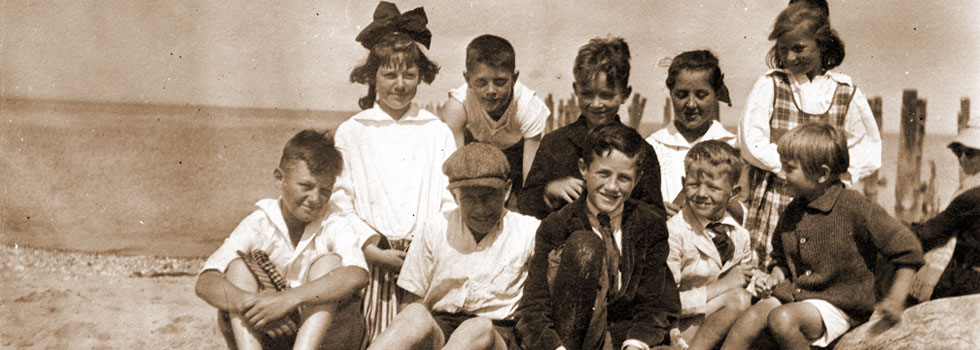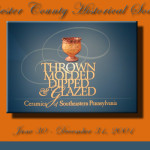These are screen shots from an online exhibit called Thrown, Molded, Dipped, and Glazed: Ceramics of Southeastern Pennsylvania from the Chester County Historical Society, 2001. I put them out here to share this info for anyone researching this subject.
Thrown, Molded, Dipped, and Glazed explores the history of ceramics in the Chester County area with over 175 pieces from the Society’s extensive collection of ceramics, along with loans from individuals and other institutions. The exhibit focuses on three types of ceramics associated with our region – earthenware, porcelain, and Majolica – and their origins and uses in 19th century Chester County.

Plate, drape molded earthenware with slip decoration, John D. Burns, 1869. Photo by George Fistrovich.
Between 1796 and 1896 more than 160 potters worked in Chester County, creating redware, porcelain and majolica from local clay deposits. Influenced by international events and local customs, Chester County pottery and clay businesses reflected technological change, shifting trade patterns and developing social trends.
In the early 1800s local potters, many of them farmers, made redware from clay found on or near their property. It was economical for regional customers who used redware for basic household needs.
Redware in the United States refers to red-colored earthenware. In the early 1800s Chester County potters used local iron-bearing clay or finer quality clay from Philadelphia to produce utilitarian household products. They made specialized forms such as inkwells or candlesticks and multifunctional shapes such as bowls and plates. Reward was usually very practical and purchased as needed.
Glazes were an important seal for this porous earthenware. Glazes used here were both clear and colored, including an iridescent black manganese available locally.
In 1826 William E. Tucker of Philadelphia began to produce one of the earliest American porcelains. The primary ingredient was kaolin, a fine white clay with few impurities. It was discovered in New Garden Township on Israel Hoopes’ farm in quantities large enough for Tucker’s commercial production.

Majolica-style salad bowl with a daisy pattern. Circa 1800-1890. Created by Griffen, Smith and Hill.
In the 1880s Griffen, Smith and Hill, of Phoenixville, produced Etruscan majolica, the most popular example of its kind in the United States. It was slip cast in molds that shaped ordinary tableware into fantastic shapes, including corn, shell and seaweed, cauliflower, and bamboo. It was decorated with translucent lead or tin glazes in primarily pink, green and yellow.
New technology and an assembly line work force enabled production of majolica in large sets of matching dinnerware and teaware that was affordable to the growing middle class. The Great Atlantic and Pacific Tea Company and an Ohio tea firm increased its national distribution by giving it to customers as premiums. Majolica went out of style, however, by the late 1890s.








TrackBack URL
https://www.karenfurst.com/blog/thrown-molded-dipped-and-glazed-ceramics-of-southeastern-pennsylvania/trackback/